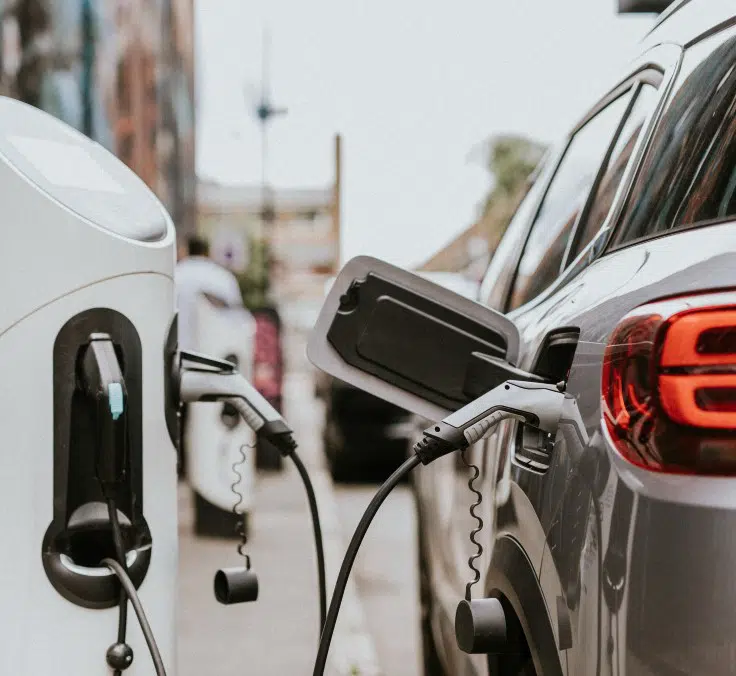SUSTAINABILITY| 27.07.2022
The Earth Overshoot or Ecological Debt Day
We find ourselves faced with a climate emergency that has placed us in a decade of action characterized by a sense of urgency and a unique opportunity to work together to tackle social and environmental challenges and thus avoid irreversible changes to our planet.
The scarcity of resources, depletion of ecosystems, and impact on biodiversity threaten not only the irrecoverable loss of natural wealth, but also our health and our social welfare model.
The following article discusses this, and how if each of us does our part, together we can overcome whatever challenges lie ahead. To be part of the change, we must take action. Even the smallest actions in our daily lives can generate a huge impact on the world and help us to care for the planet.
What is Earth Overshoot or Ecological Debt Day?
Earth Overshoot Day, also known as Ecological Debt Day, marks the date on which humanity’s demand for resources in any given year surpasses the Earth’s capacity to regenerate those resources that year. Having extrapolated all the data analyzed, it was determined that this year it falls on July 28.
This date is calculated by dividing the planet’s biocapacity (the amount of ecological resources that the Earth is capable of generating this year), by Humanity’s Ecological Footprint (humanity’s demand this year), and multiplying it by 365, the number of days in a year.
What is the origin of this day?
Earth Overshoot Day is organized and calculated by the Global Footprint Network, an international research organization that offers decision makers a series of tools to help the economy operate within the Earth’s ecological limits. According to this organization, it was at the start of the 1970s when the critical threshold was passed and human consumption started to outpace what the planet was capable of producing. Its data indicates that humanity’s demand for resources is now equivalent to more than 1.7 Earths.
Earth Overshoot Day, as a concept, was conceived by Andrew Simms, member of the UK think tank New Economics Foundation, which in 2006 joined forces with the Global Footprint Network to launch the first world campaign to commemorate this occasion.
The aim of each year’s campaign is to raise awareness about the Earth’s limited resources. They have estimated that in 2022, in less than seven months, humanity demanded more from nature than all the planet’s ecosystems are capable of regenerating in an entire year.
Based on this data, we are going to need the resources of two Earths well before the middle of the 21st century. Furthermore, the cost of resource depletion is progressively more evident. Climate change and the effects brought on by this phenomenon are one of the most obvious consequences, as the heat waves we were not accustomed to seeing until now have made evident.
What consequences has the overexploitation of resources led to?
The fact that the date is arriving earlier each year is no coincidence, as it is the result of the overexploitation of natural resources that has sped up since the 1970s. This can be attributed, in large part, to the 50% growth between 1980 and 2005 in the global extraction of natural resources.
In turn, this has caused an increase in humanity’s carbon footprint, and the loss of biological diversity due to the destruction of ecosystems and natural habitats, both on land and at sea. Another major problem is environmental pollution and the rapid increase in global warming and climate change.
However, using all the natural resources that the Earth is capable of regenerating in a year not only has environmental consequences, but also economic consequences. When a natural resource is hard to come by, its market price increases, meaning that another consequence is that it is more expensive to buy everything we need to survive.
Despite the fact that Overshoot Day falls earlier and earlier each year, in 2020, the global pandemic marked the one time that an improvement was seen, pushing the date back by one month. However, Mathis Wackernagel, Chairman of the Global Footprint Network, declared that this was not a cause for celebration, adding that “We need to learn our lesson and make pre-planned progress, not progress brought on by a disaster.” Despite this, the milestone demonstrated that changes in short-term consumption habits are possible, marking an unprecedented opportunity to reflect on the kind of future we want.
What can we do to “move the date” and reduce our resource consumption?
The current trend is not where we want to be, because as indicated by the campaign’s hashtag, #MoveTheDate, if we take wise, forward-thinking decisions, we can invert natural resource consumption trends and improve everybody’s quality of life by focusing on 5 areas of action, as defined by the Global Footprint Network:
- Planet: how we can help nature to prosper.
- Cities: how we design and manage our cities.
- Energy: how we supply ourselves with energy.
- Food: how we feed ourselves.
- Population: how many of us there are.
The sooner that companies, cities, and countries plan ahead and prepare for the foreseeable future, the better their chances for prosperity. This is what the Global Footprint Network refers to as the “power of possibility”, which is nothing more than the many possibilities and solutions we have to move the date and become more resilient. Some of the gestures they suggest are pretty simple, such as; doing away with single-use plastics, promoting circular fashion or shared vehicle use, as well as a variety of other solutions that can be consulted here.
What are we doing at MAPFRE to #MoveTheDate of Earth Overshoot Day?
At MAPFRE, we are aware that when faced with global challenges like pushing back Earth Overshoot Day, our response must be collective. We must collaborate with one another to bring about the change that we want to form part of, with our environmental plan to care for the planet and continue making progress towards our purpose.
In 2021, we achieved environmental milestones, which we are very proud of:
- Reaching carbon neutrality in Spain and Portugal.
- With a 39.5% reduction in the carbon footprint in 3 years.
- 586,322 kWh of photovoltaic generation with 5% for self-consumption.
- Signing up to the circular economy agreement with the Spanish Chamber of Commerce to launch the SME competitiveness and sustainability project
- Achieving AENOR’s Zero Waste Regulation certificate at our Corporate Headquarters.
Faced with these major steps forward, we want to continue making progress with the Environment, striving every day to reduce our impact on the planet through initiatives that form part of our Environmental Footprint Plan. This plan aims to make an impact on a wide variety of important elements, such as sustainable construction, energy efficiency, sustainable mobility, resource management, green purchasing, water management, and biodiversity.
However, we are aware that, despite the progress that these milestones and actions represent, we cannot let up in our efforts, and we want to continue building a sustainable future with our Sustainability Plan 2022-2024, through which we commit to:
- Reducing the Group’s carbon footprint by 50%.
- Becoming carbon neutral in all countries by 2030.
- Underwriting 45,000 “Gama Cambio” policies.
- Training 100% of the preferred tow truck and repair shop network on repairs.
The opportunity for transformation that lies before us and the vision of what we want to achieve inspire us to be ambitious. At MAPFRE, we aspire to making a sustainable future in which Earth Overshoot Day is no longer necessary.
RELATED ARTICLES:




